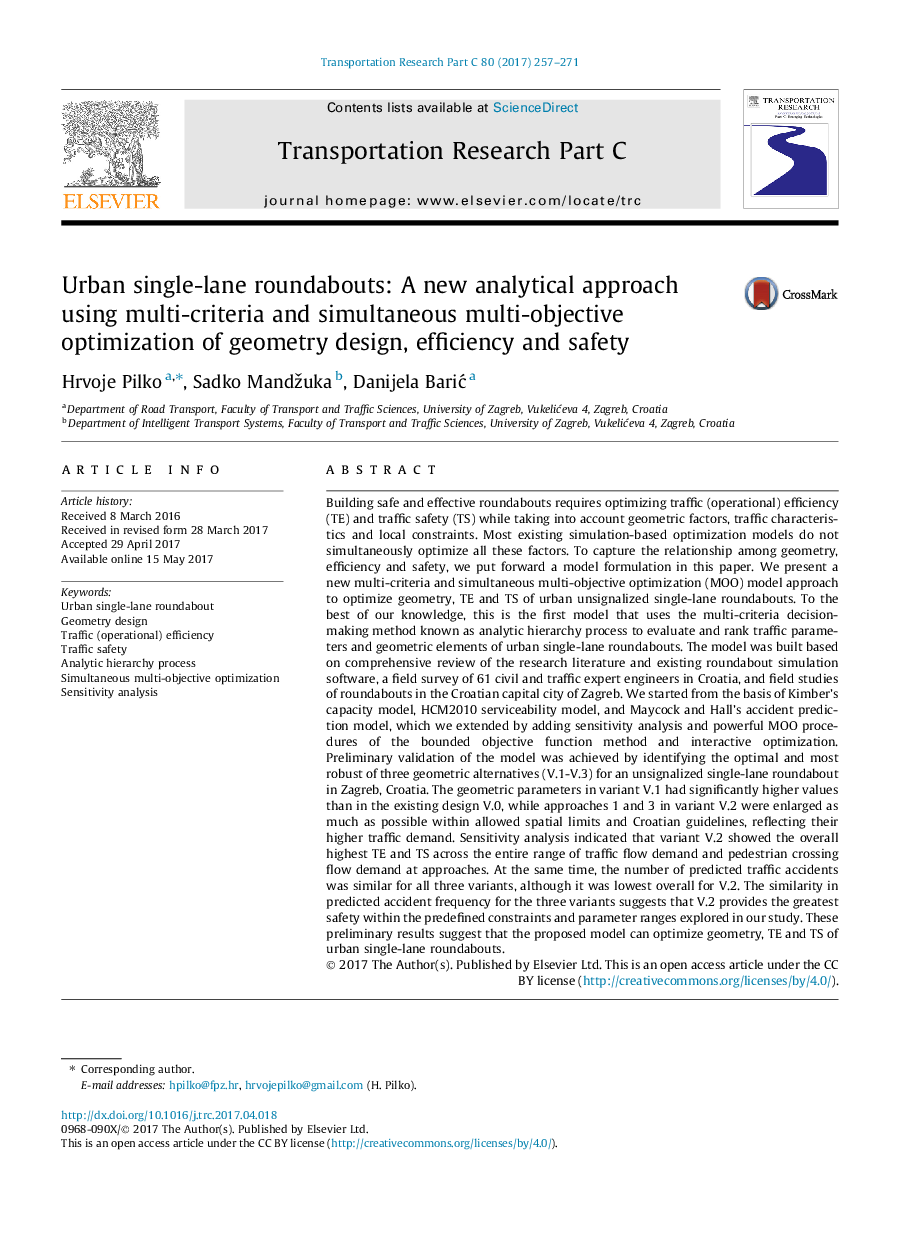| Article ID | Journal | Published Year | Pages | File Type |
|---|---|---|---|---|
| 4968449 | Transportation Research Part C: Emerging Technologies | 2017 | 15 Pages |
â¢A multi-criterion approach is described to optimize urban single-lane roundabouts.â¢AHP is used to evaluate and rank traffic and geometry parameters.â¢Geometry, operational efficiency and safety are simultaneously optimized.â¢The approach is validated in a preliminary study weighing three alternatives.
Building safe and effective roundabouts requires optimizing traffic (operational) efficiency (TE) and traffic safety (TS) while taking into account geometric factors, traffic characteristics and local constraints. Most existing simulation-based optimization models do not simultaneously optimize all these factors. To capture the relationship among geometry, efficiency and safety, we put forward a model formulation in this paper. We present a new multi-criteria and simultaneous multi-objective optimization (MOO) model approach to optimize geometry, TE and TS of urban unsignalized single-lane roundabouts. To the best of our knowledge, this is the first model that uses the multi-criteria decision-making method known as analytic hierarchy process to evaluate and rank traffic parameters and geometric elements of urban single-lane roundabouts. The model was built based on comprehensive review of the research literature and existing roundabout simulation software, a field survey of 61 civil and traffic expert engineers in Croatia, and field studies of roundabouts in the Croatian capital city of Zagreb. We started from the basis of Kimber's capacity model, HCM2010 serviceability model, and Maycock and Hall's accident prediction model, which we extended by adding sensitivity analysis and powerful MOO procedures of the bounded objective function method and interactive optimization. Preliminary validation of the model was achieved by identifying the optimal and most robust of three geometric alternatives (V.1-V.3) for an unsignalized single-lane roundabout in Zagreb, Croatia. The geometric parameters in variant V.1 had significantly higher values than in the existing design V.0, while approaches 1 and 3 in variant V.2 were enlarged as much as possible within allowed spatial limits and Croatian guidelines, reflecting their higher traffic demand. Sensitivity analysis indicated that variant V.2 showed the overall highest TE and TS across the entire range of traffic flow demand and pedestrian crossing flow demand at approaches. At the same time, the number of predicted traffic accidents was similar for all three variants, although it was lowest overall for V.2. The similarity in predicted accident frequency for the three variants suggests that V.2 provides the greatest safety within the predefined constraints and parameter ranges explored in our study. These preliminary results suggest that the proposed model can optimize geometry, TE and TS of urban single-lane roundabouts.
